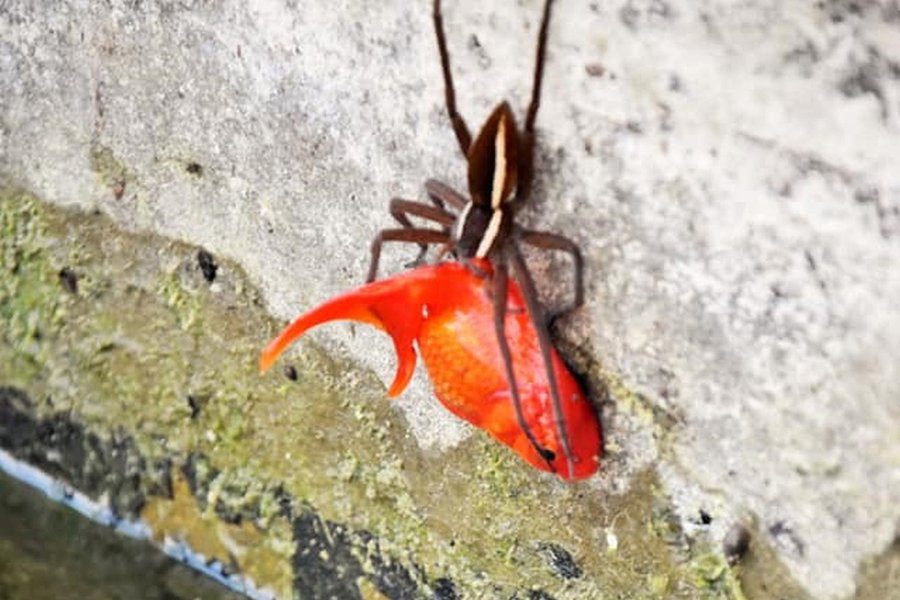Man finds giant spider dragging his pet goldfish out of pond trib.al/VVhY8FM
10:05 AM · Jan 2, 2020SocialFlow
A tour guide in Barberton, South Africa, wanted to show his date his pet goldfish, Cleo, which he kept in the pond by his house. To the man's surprise, Cleo wasn't in the pond when he got there; she was hovering in midair, caught in a spider's fangs.
The tour guide (a man named Jérémy Schalkwijk) knew he was witnessing something remarkable when he pulled out his camera and began cataloging Cleo's final moments. Sadly for the fish, her demise was just part of a typical day for the eight-legged assassins known as nursery web spiders — a family of semiaquatic arachnids than can walk on still water, dive beneath the surface to evade predators and even "fish" for prey many times their own size.
How common is spider-on-fish predation? According to a 2014 study in the journal PLOS ONE, spiders in eight of the world's 109 arachnid families can catch and eat small fish, and do so on every continent but Antarctica. Rather than building webs to catch prey, these arachnids hunt for their meals in person, on land and in the water. (Tellingly, some spiders within this family are also known as "fishing spiders," "dock spiders" and "raft spiders.")
They do this by lowering their front legs down to rest on the water's surface while anchoring their hind legs to an adjacent stone or plant. The water acts like a web, with the spider able to detect minute ripples created, for example, when an unlucky insect falls in and gets trapped by the water's surface tension.
When something yummy passes by the spider's perch — be it a fallen bug or passing fish — the spider lashes out with its front legs and brings the prey to its jaws. The spider bites down with flesh-piercing fangs, injects its prey with a lethal, neurotoxic venom, then finally hauls its dead quarry back to dry land.
In an interview with The Sun, Schalkwijk estimated that Cleo must've been double the length and weight of her octopedal attacker. While this may seem like an incredible load to bear, it's actually below average for fishing spiders. In the 2014 study, which surveyed 89 incidences of spider-on-fish predation, the ensnared fish was about 2.2 times as long as the spider on average, with some spider species ensnaring fish five times their size.
That's pretty freaky — but not nearly as freaky as the Goliath "birdeater" spiders of South America, which can grow to up to 1 foot (0.3 meters) long. What do Goliath birdeaters eat? We'll let you figure that out for yourself.

No comments:
Post a Comment